
image found here
Cussonias are a small genus from Africa and the Mascarene Islands
There are maybe 25 species in the small genus known as the Cabbage Trees, and without trying too hard I’ve already brought home five of them. I didn’t set out to be a collector of cussonias, but spurring me on is the fact that, so far, there doesn’t seem to be an ugly duckling in the bunch. Without hesitation, when one turns up at a local nursery, I grab it. Cussonias are included in the araliaceae family, which contains some of the most outlandishly beautiful leaves to be found anywhere. They have that family’s signature finely cut foliage but atop a seriously tough plant. As mature trees they can reach 15 feet, but they flourish for years in containers, where they need about as much attention as succulents. Their mop-headed, evergreen canopies bring the lush life to frost-free, dry-summer climates along with what I can never get enough of, that emphatic pop of verticality.

My first Cabbage Tree, Cussonia gamtoosensis, which I recently planted in the ground. Some plants are so beautiful that I’m willing to change the garden to accommodate them as they mature. Found locally under Annie’s Annuals label.
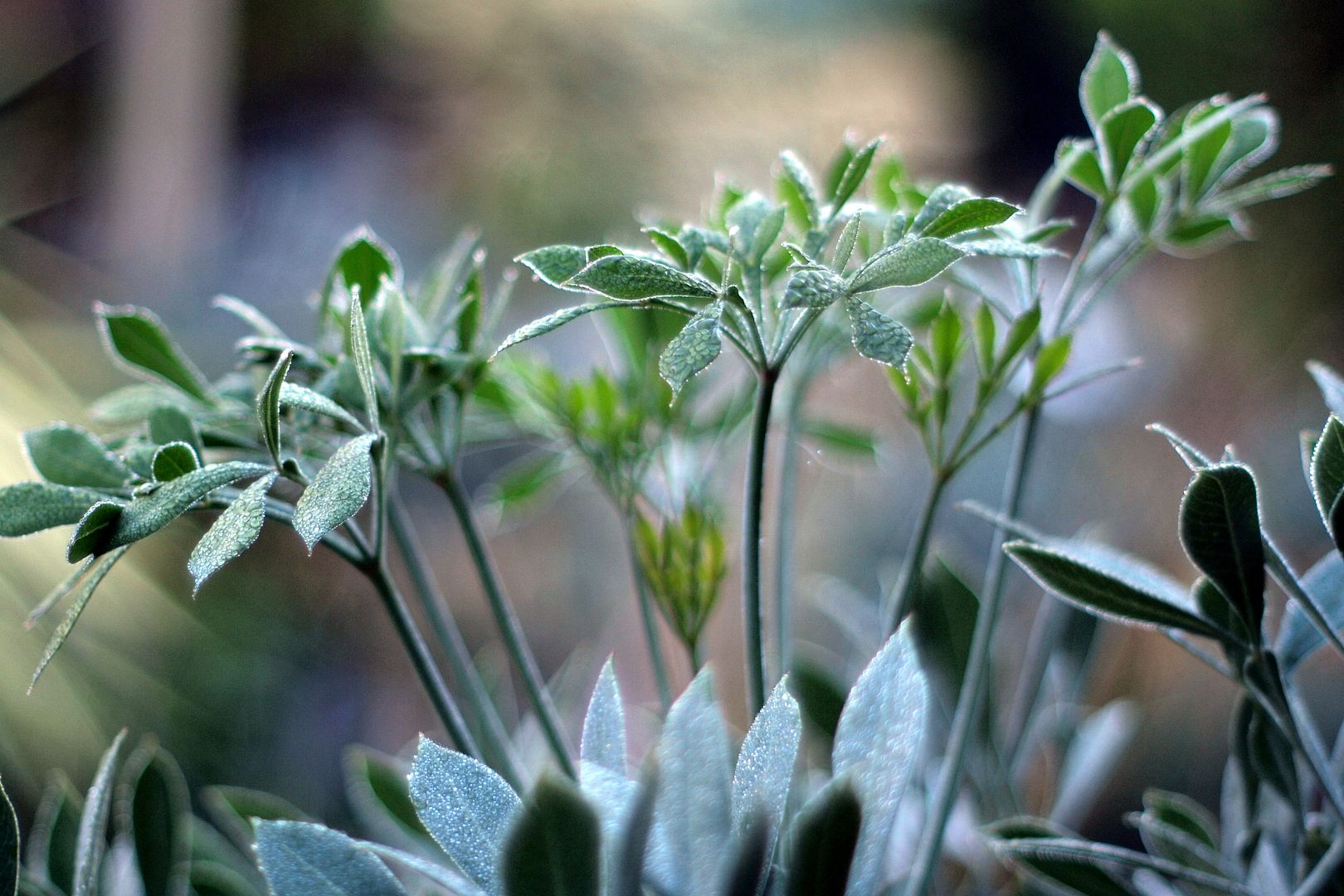
An old photo, with its leaves spangled in morning dew
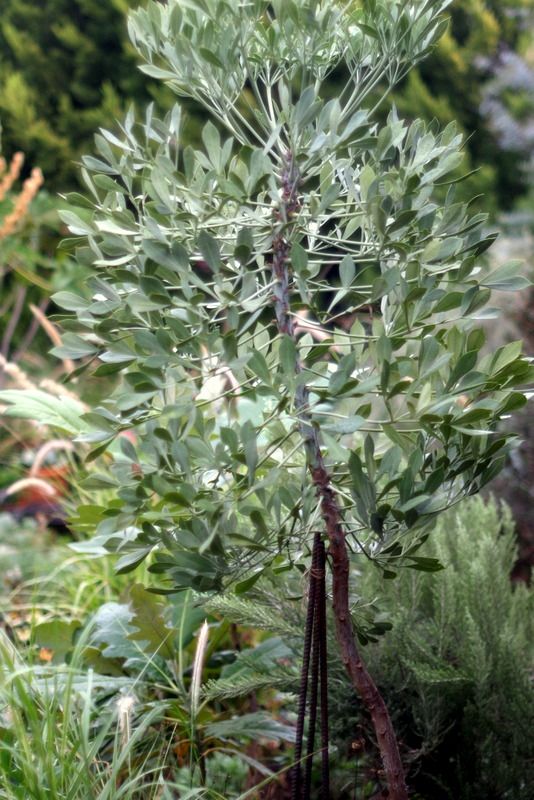
That’s a rebar tripod it’s resting against to help gently train the leaning trunk upright.
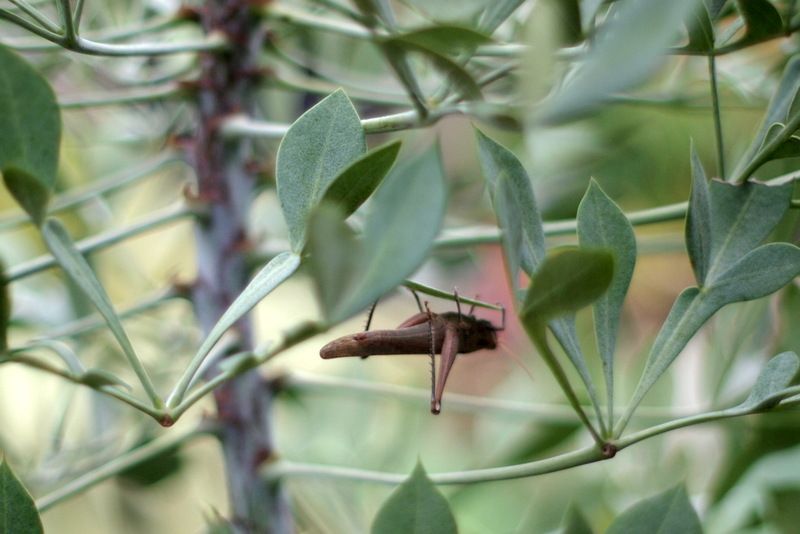
This is where the grasshoppers hung out all summer, as many as six at a time, enjoying the simultaneous opportunities for sun and concealment. Yes, I count grasshoppers. It’s a repulsion/attraction thing. When they become too numerous, we freeze them in peanut butter jars.

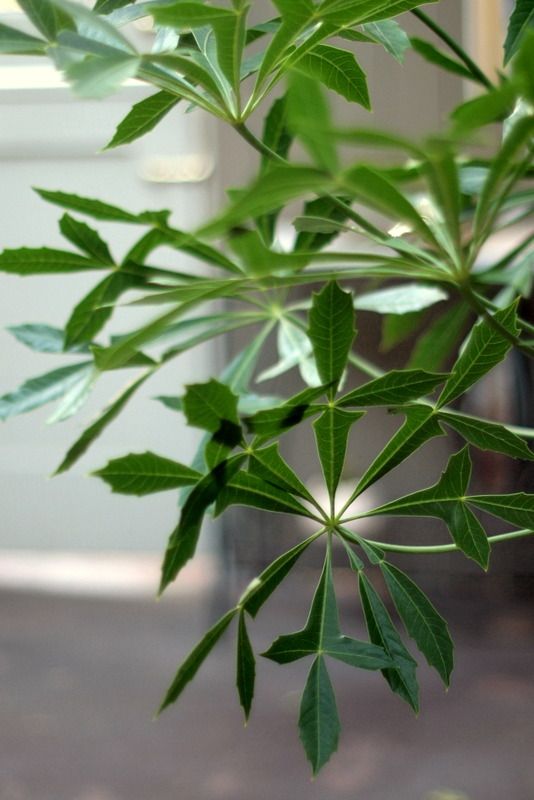
Brought home June 2014. Cussonia spicata. The Cabbage Trees have a peculiar trunk-to-canopy ratio, with short, thickened trunks giving them their unique profile. Some of them, like the more commonly available Cussonia paniculata, are known as pachycauls, from the Greek pachy– meaning thick or stout, and Latin caulis meaning the stem. (How many of us can identify with pachycauls in this season of holiday feasting?)
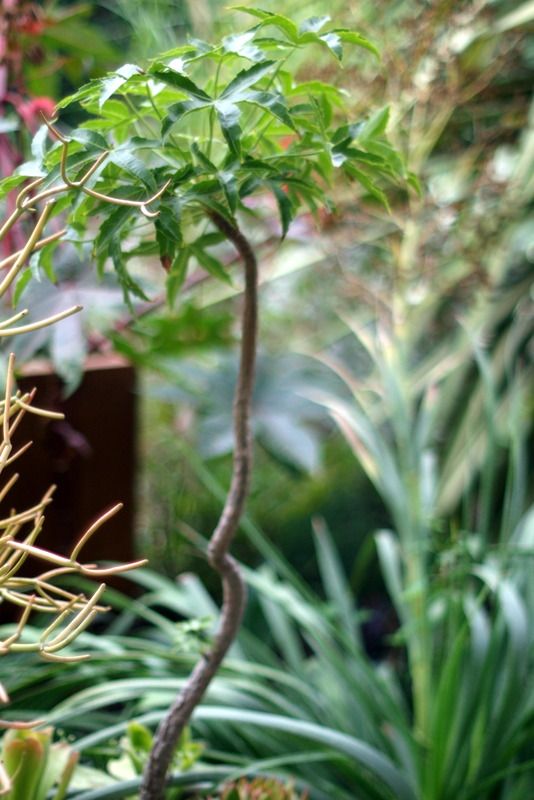
Cussonia natalensis, found at Xotx-Tropico in West Hollywood. This little nursery is so jam-packed with rarities that it’s easy to miss some real gems. Fortuntely, cussonias have a distinctive outline that sets them apart even in a crowded nursery. After I selected this one to take home, for the rest of my visit, Leon, the owner, and a true character in the best Hollywood tradition, referred to me simply as the “plant girl.” (At his nursery, which he’s run for 25 years, Leon follows you around and tells the story of each plant, as if he runs an adoption agency instead of a plant nursery and you’re inquiring about a child temporarily under his care. The website is down, but the address is 900 No. Fairfax Ave, West Hollywood, CA 90046, (323) 654-9999.)
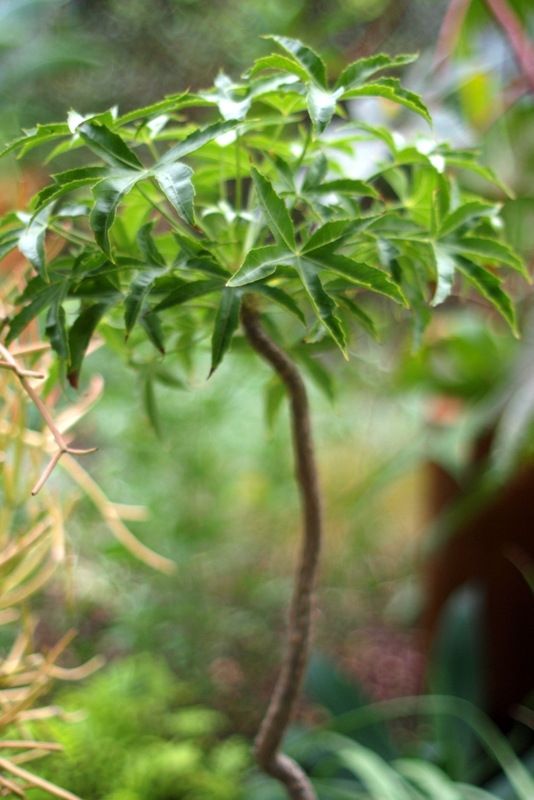
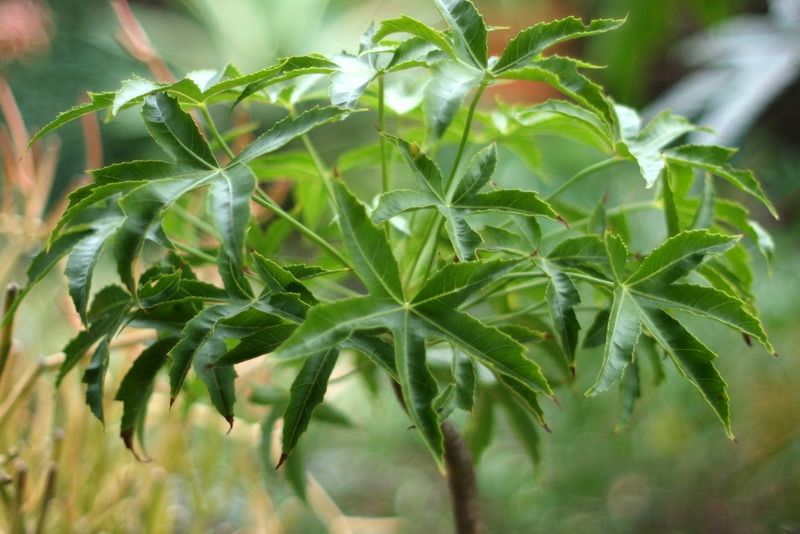
Reminds me of a bright green maple leaf. Also known as the Rock Cabbage Tree.
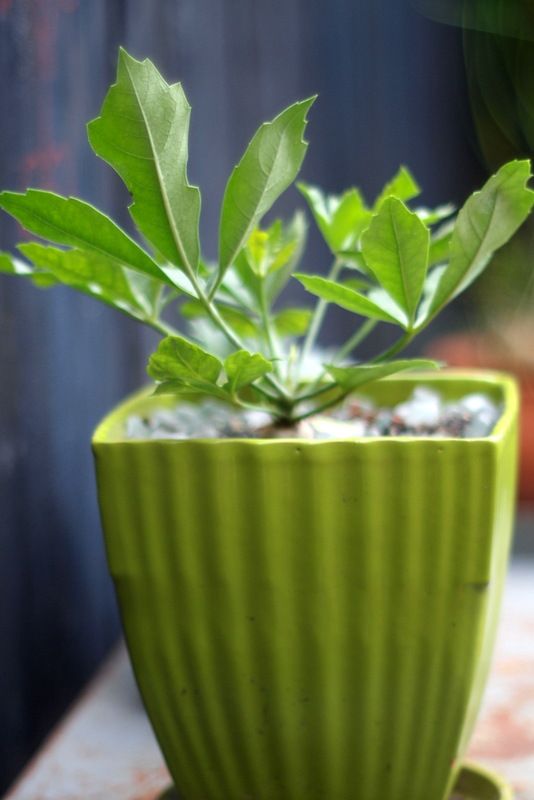
This is Cussonia paniculata, probably the most commonly available Cabbage Tree, whose mature leaves take on a bluish hue. I’ve planted small ones in the ground, only to have them mush out, so this one will live indefinitely in a container. I once stood under a mature tree on a Venice garden tour and didn’t even recognize it as a cussonia until chatting with the owner about it. Keeping cussonias in containers retains their unique form.
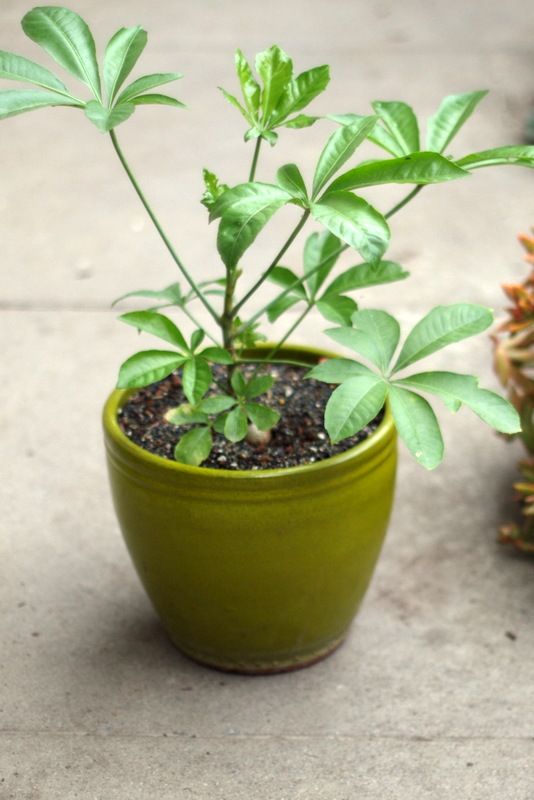
Cussonia tranvaalensis, also found locally under Annie’s Annuals label. This cussonia brought to my attention recently that, at some undefined point in time, I’ve turned into a person who squishes aphids with their bare hands. None of the other cussonias seem to be attacting aphids.
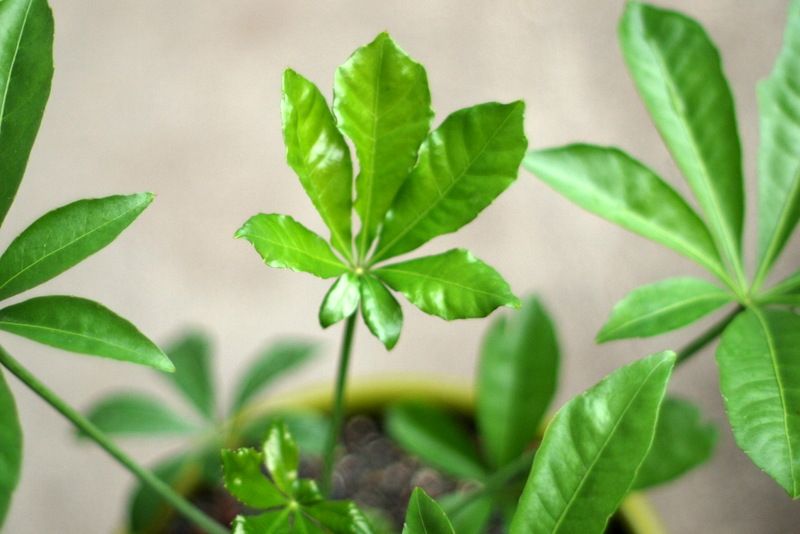
Since it’s known as the Grey Cabbage Tree, these leaves will also acquire a blue-grey cast as they mature.

Yeah for cussonias! Like you, I’ve started to collect cussonias without really meaning to. All of mine came from Annie’s. I have C. paniculata, C. spicata and C. natalensis. Will grab a C. gamtoosensis the next time I’m at Annie’s, which could be soon :-).
C. spicata has been an incredibly vigorous grower for me. From a 4-inch pot to 5 ft in less than six months. And that’s in a pot.
C. gamtoosensis , I am your slave. Gerhard better not take the last one …
I keep looking at them but have yet to take one home, scared off by their mature dimensions. Maybe I’ll try one in a pot…
A wonderful plant to collect! I’ve got two, and that’s enough for a person who lives where they’re not hardy.
@Gerhard, yes, spicata is fast. I need to move mine out of its pot. But paniculata for me is frustratingly slow, slow, slow!
@Kathy, you need to tag along with Gerhard when he visits Annies.
@Kris, these plants love containers and develop a lot of character in confined quarters.
@Loree, there’s probably aerial space in the SP, right? But you’ve got lots from the aralia family already, the hardy scheffleras, etc.
Cussonia spicata at 25 years old are multi-trunked beasties almost 30 feet tall in my garden. They’re both blooming again this year, a 2 year process. The large one at the LA Arboretum is drool worthy. I’ve only been to Leon’s once, and he wasn’t in. I’d loaded up on Heliconias on my visit, only one of which survives, wishful thinking on my part.